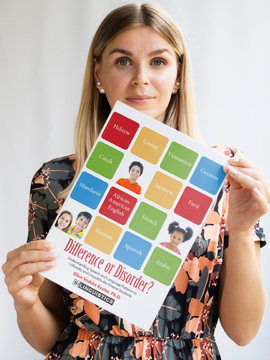Templates and Testing Considerations for Less Prevalent Communication Disorders
$22.00

Course Type: Video – 1 1/2 hours
ASHA Course Code: Service Delivery Associated with Speech, Language, Hearing and Related Disorders – 7010
When we set out to write up a report for students with less frequently occurring communication disorders, it can take an excruciatingly large amount of time to find or create the tasks needed for the evaluation and the text needed to complete the report.
We’re going to run through six different communication disorders that are less frequently occurring than your general expressive language and speech disorder. We’ll share considerations for testing, checklists, and test blurbs so you can efficiently knock out these reports.
Additional Information
| Population | Early Childhood, School Age |
|---|---|
| Duration | 1.5 hours |
| Credit | .15 Continuing Education Units |
| Topics | Evaluations |
| Format | Video |
FINANCIAL: Ellen Kester, Ph.D., CCC-SLP is the founder and owner of Bilinguistics and she receives a salary. She receives royalties from sales of products published by Bilinguistics. Scott Prath, M.A., CCC-SLP is employed by Bilinguistics and receives a salary. He also receives royalties from sales of products published by Bilinguistics.
NON-FINANCIAL DISCLOSURE: None to disclose.
The process of writing a speech-language report can be a daunting task. Before we even start testing we have piles of documents from teachers, parents, and possibly other professionals. It is a tedious job to organize it into a coherent background section.
Next, we use a series of standardized and non-standardized measures to gather information about receptive language, expressive language, articulation, phonology, voice, fluency, and pragmatics. Information about language skills can be further divided into content and form. For bilingual students we address all of these areas in a second language as well. Many speech-language pathologists struggle with how to efficiently organize all of the information into a report that is as succinct as possible but still includes all of the necessary components.
In this workshop, we’ll provide a framework to efficiently organize both the background information and the data gathered from standardized and non-standardized measures. We’ll share forms, tables, charts, verbiage, and strategies that will help you produce well-organized reports in less time.
Participants will:
Write a background section that includes all pertinent parent and teacher information
Identify strengths and weaknesses from standardized and non-standardized testing measures
Describe dynamic assessment outcomes to inform the reader about effective
starting points and meaningful goals
Time-Ordered Agenda:
05 minutes Introduction
10 minutes Report Template approaches
10 minutes Background Information
10 minutes Describing the results of standardized and non-standardized measures for language
10 minutes Describing dynamic assessment results
10 minutes Describing standardized and non-standardized speech testing measures
30 minutes – question and answer session
05 minutes Conclusion
Need CEUs?

 Share
Share
 Tweet
Tweet
 LinkedIn
LinkedIn
 Pin
Pin
 Email
Email







